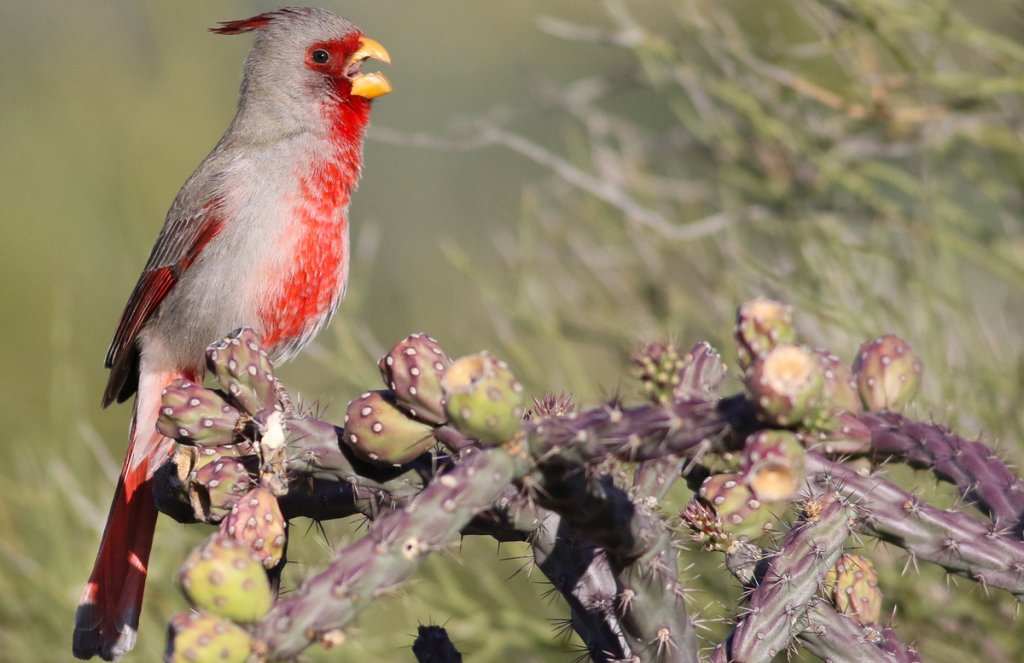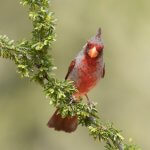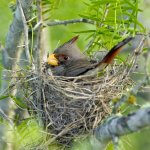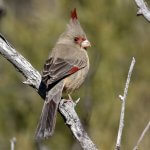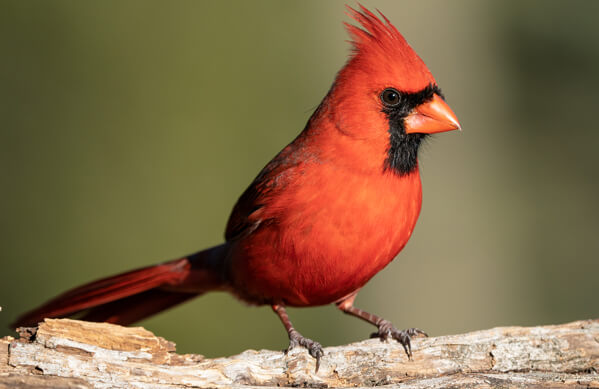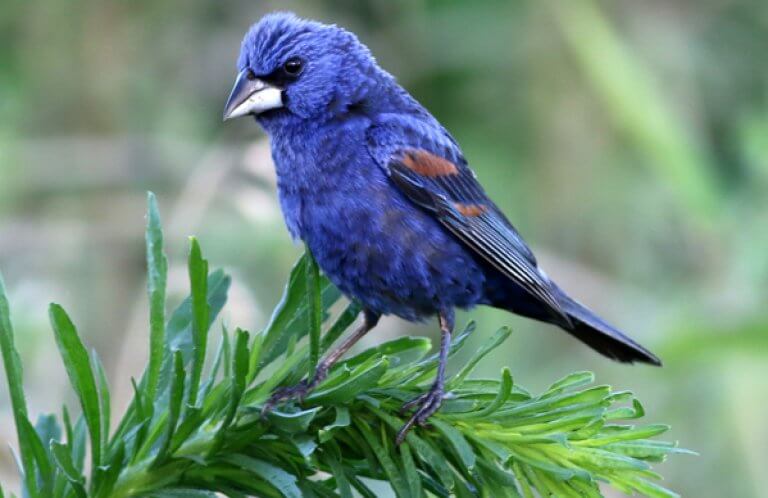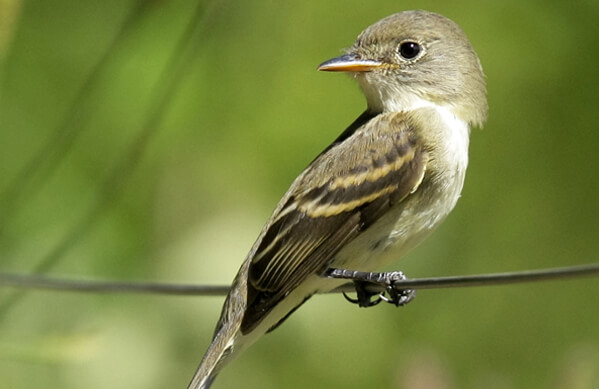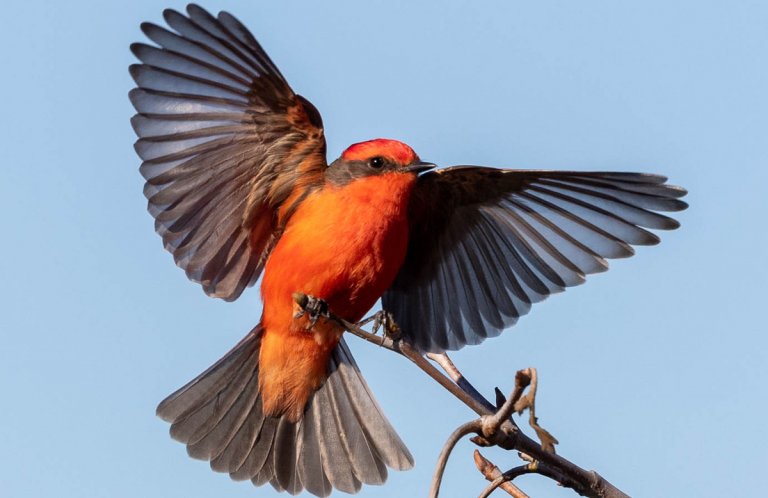About the Pyrrhuloxia
Birders visiting the arid deserts of the southwestern U.S. and northwestern Mexico could easily dismiss the Pyrrhuloxia as just a dull version of its close relative, the Northern Cardinal. The male is plain brownish-gray, with splashes of bright red on its face, underside, wings, and tail and a red-tipped gray crest. The female resembles her Northern cousin even more closely.
But this bird's distinctive bill shape, which gives it its common name, makes an accurate ID fairly simple.
Unique Beak
The Pyrrhuloxia's common name is based on its former genus name, which was derived from two Greek words: pyrruos (flame-colored) and loxuos (crooked). The latter term refers to this bird's stout, yellow, rather parrot-like bill, which has a sharply curved upper mandible. This unique bill shape makes identification of even a dull-colored juvenile Pyrrhuloxia easy.
Songs and Sounds
The Pyrrhuloxia's songs and calls are almost identical to those of the Northern Cardinal. See if you can tell the difference!
Pyrrhuloxia song:
Pyrrhuloxia call:
Northern Cardinal song:
Northern Cardinal call:
Breeding and Feeding
At the start of each breeding season, a male Pyrrhuloxia establishes and defends a territory against rivals and other intruders through song, aggressive posturing, and determined attacks. His mate will also join him in territory defense, particularly if their eggs or nestlings are threatened. The male often feeds the female during courtship.
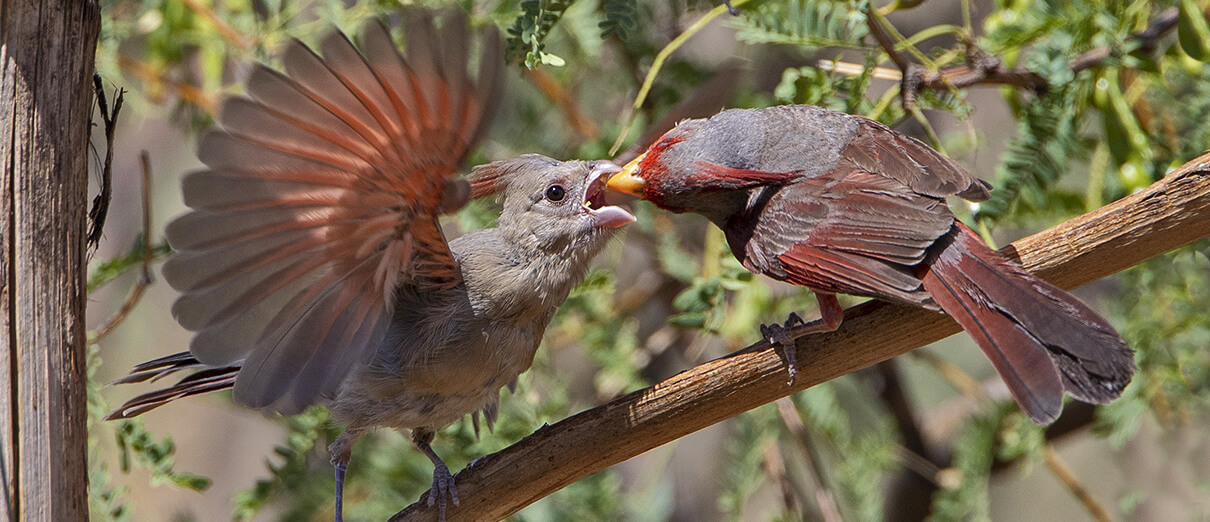
The female Pyrrhuloxia builds her nest within dense brush, particularly thorny mesquite, which provides some protection from predators. Her cup-shaped, rather shallow nest is made of twigs, strips of bark, and coarse grasses, lined with rootlets, hair, and softer materials. There she lays 2-3 eggs, which she incubates for about two weeks. The male brings her food while she's on the nest. Both parents feed the young after they hatch, and they fledge within a few weeks. Pyrrhuloxia sometimes breed with Northern Cardinal where their ranges meet, producing hybrids that show characteristics of both species.
Sometime-Socialite
Pyrrhuloxia are omnivorous, foraging on the ground and low in shrubbery for insects, spiders, and a variety of fruit and seeds. Like a Rose-breasted or Blue Grosbeak, this bird uses its large, strong bill to crack open and crush nuts and seeds, particularly of mesquite, a widely-available food in its dry habitats. They will often visit backyard feeders for sunflower seeds. Outside of its breeding season the Pyrrhuloxia becomes more social, often seen in large mixed flocks during the winter.
Pyrrhuloxia Region and Range
Desert Wanderer
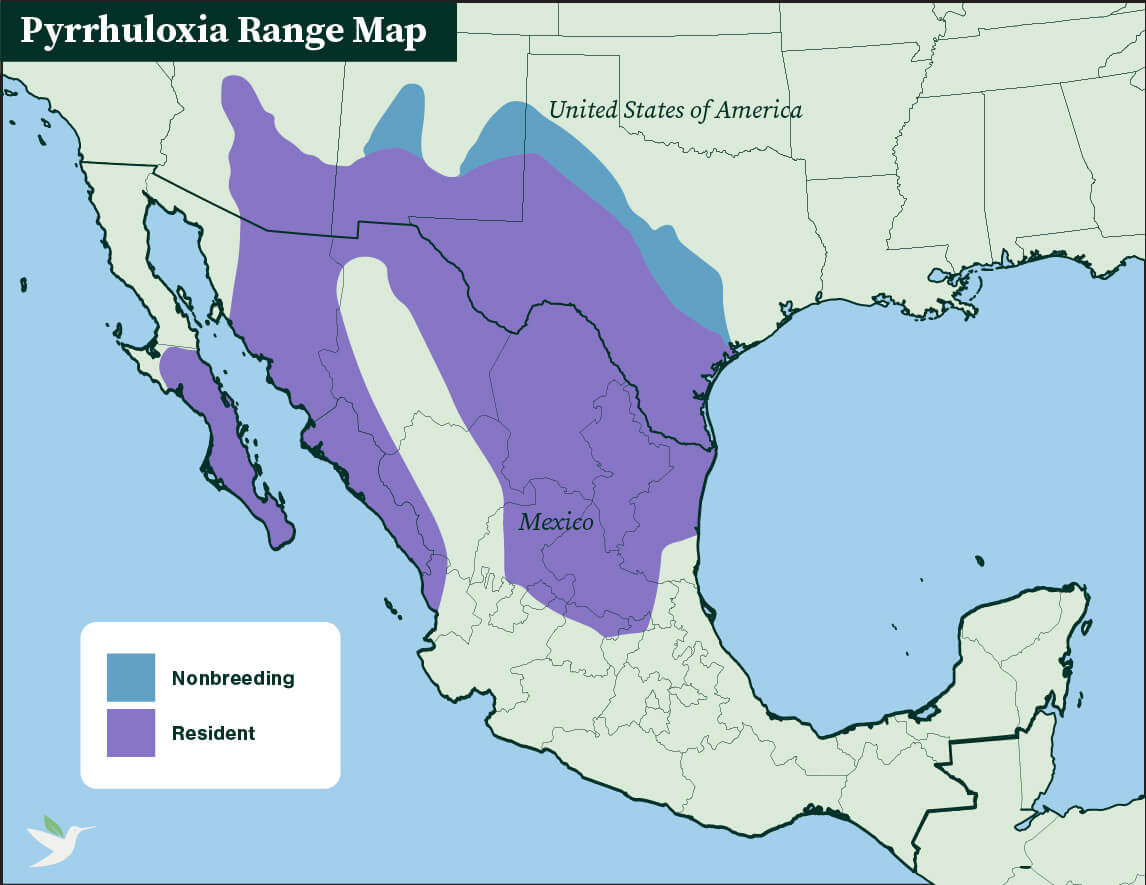
The “desert cardinal” is a year-round resident from central Mexico north into the southwestern United States, from Arizona to Texas. Three subspecies are recognized, based on the three separate regions this species inhabits (Sonoran Desert, Chihuahuan Desert/Mexican Plateau, and Baja California) and physical variations.
The Pyrrhuloxia's range may overlap with that of the Northern Cardinal, but the Pyrrhuloxia prefers drier habitats like thorn scrub, mesquite thickets, and brushy desert stream and creek beds. During the winter, Pyrrhuloxia join flocks and will wander into more open habitats such as farmland with brushy hedgerows, open woodlands, and backyards.
Conservation
Like the Vermilion Flycatcher, the Pyrrhuloxia is threatened by loss of riparian habitat throughout the American southwest. Many other bird species of conservation concern occur in this habitat, including the Western Yellow-billed Cuckoo, Costa's Hummingbird, Southwestern Willow Flycatcher, and Least Bell's Vireo.
ABC is working to preserve this southwestern habitat on several fronts. We continue our advocacy for the San Pedro River, one of the last major undammed rivers in the American Southwest that runs through the Chihuahuan Desert and the Sonoran Desert in southeastern Arizona. ABC has also been working with landowners and managers at Texas's B. J. Bishop Wetlands and Sandia Springs Wetland Project to continue creating and safeguarding artificial and enhanced wetlands for birds and other wildlife.
Our BirdScapes program also protects important southwestern riparian habitats through the Rio Grande Joint Venture, which works in a variety of priority bird habitats and working lands for a suite of migratory and resident birds.
Get Involved
Policies enacted by the U.S. Congress and federal agencies, such as the U.S. Fish and Wildlife Service, have a huge impact on migratory birds. You can help shape these rules for the better by telling lawmakers to prioritize birds, bird habitat, and bird-friendly measures. To get started, visit ABC's Action Center.
Living a bird-friendly life can have an immediate impact on migratory birds in the United States. Doing so can be as easy as adding native plants to your garden, avoiding pesticides, and keeping cats indoors. To learn more, visit our Bird-Friendly Life page.
American Bird Conservancy and our Migratory Bird Joint Venture partners have improved conservation management on more than 8.5 million acres of U.S. bird habitat — an area larger than the state of Maryland — over the last ten years. That's not all: With the help of international partners, we've established a network of more than 100 areas of priority bird habitat across the Americas, helping to ensure that birds' needs are met during all stages of their lifecycles. These are monumental undertakings, requiring the support of many, and you can help by making a gift today.





































